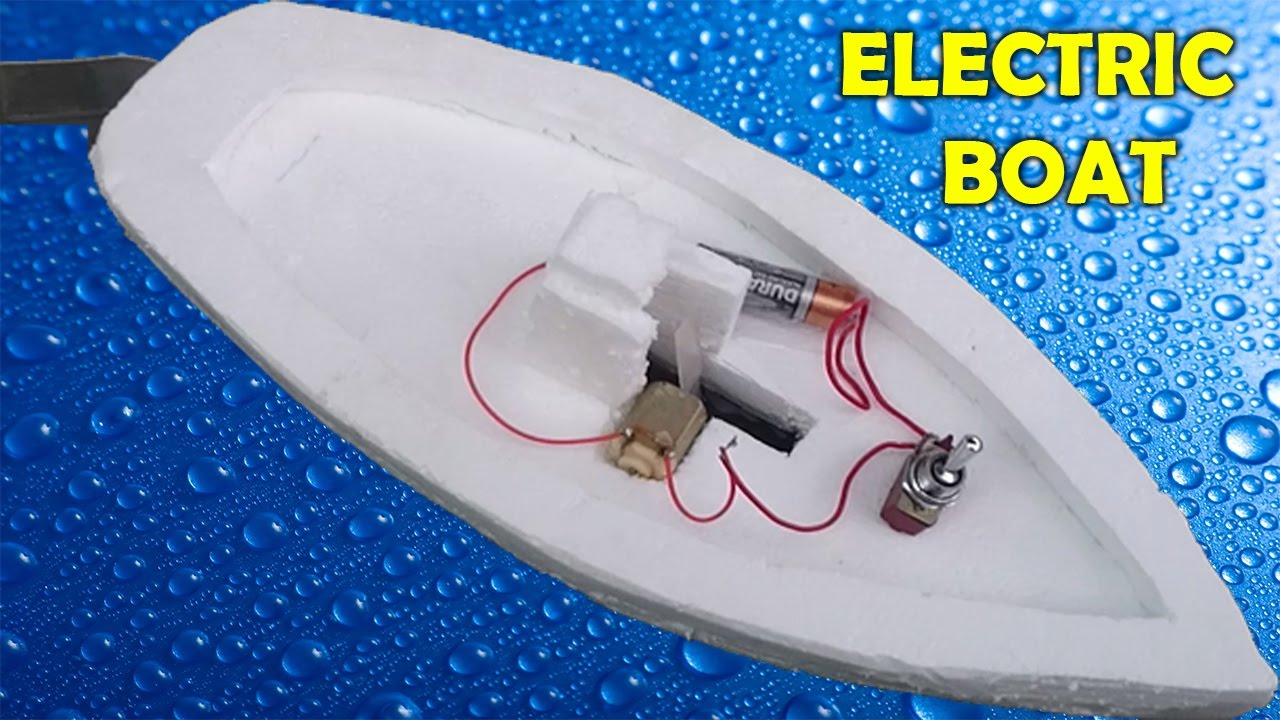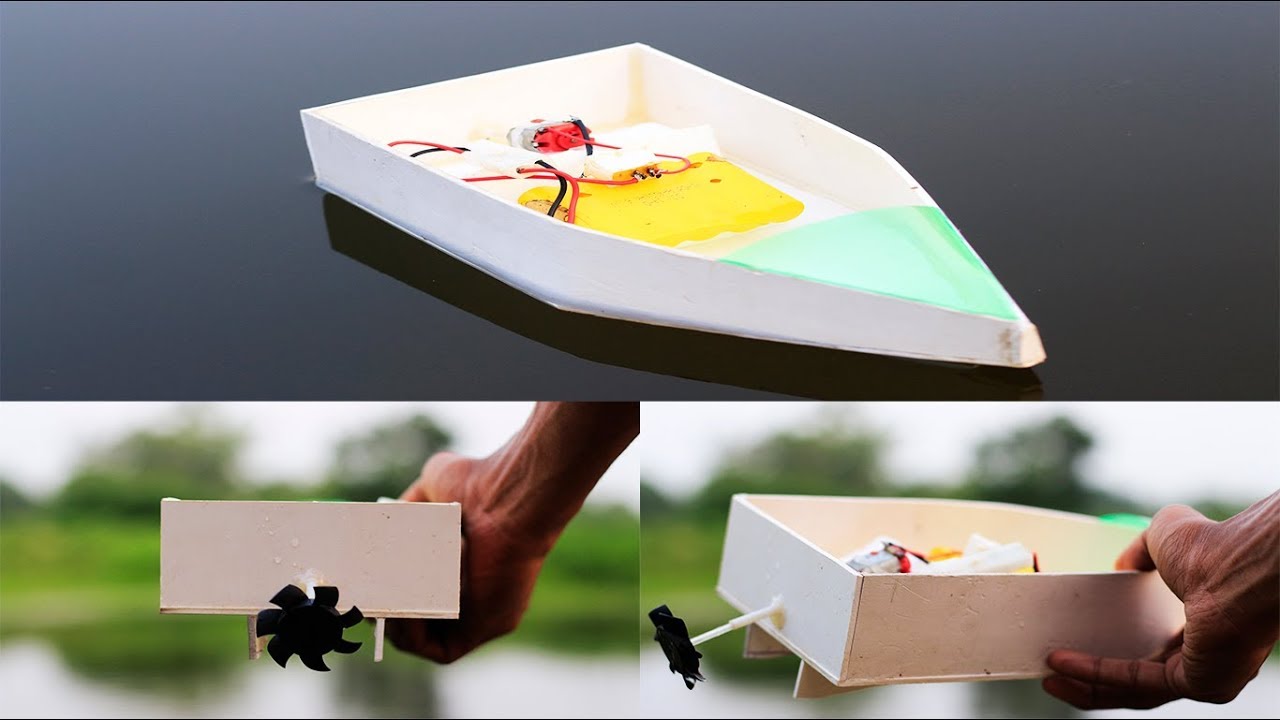Building your own electric boat at home might sound like a daunting project, but it can be a rewarding and fun experience. Not only do you get to learn about the mechanics and design of boats, but you also engage with environmental technology by building an electric-powered vessel. Whether you're looking for a small boat for a serene day on the water or a project to bond with friends and family, constructing a simple electric boat can meet all of these needs. Let's dive into the essentials you need to know before getting started!
Materials Needed

Before you embark on this exciting project, you’ll need to gather some essential materials. Here’s a handy list to ensure you have everything you need:
- Boat Hull: You can purchase a pre-made hull or construct one using materials like plywood or fiberglass.
- Electric Motor: A basic electric outboard motor is suitable for beginners. Look for one that matches the size of your boat.
- Battery: A deep-cycle marine battery is ideal. It’s designed to provide a steady power output over a long period.
- Throttle Control: You'll need a simple throttle control unit to adjust the motor speed efficiently.
- Propeller: Choose a propeller that's compatible with your chosen motor for optimal performance.
- Wiring and Connectors: Make sure to have durable marine-grade wiring and appropriate connectors to prevent corrosion.
- Sealant: Waterproof sealant will help protect your boat from leaks and moisture.
- Safety Equipment: Don’t forget life jackets, a first-aid kit, and other safety gear!
With all these materials in your toolkit, you're well on your way to creating your own simple electric boat. It’s all about planning and assembling each component carefully, so take your time and enjoy the process!
Step-by-Step Instructions

Building your very own electric boat at home might sound daunting, but trust me – it can be quite straightforward if you break it down into manageable steps! Ready? Let’s dive in!
Here's what you'll need:
- 1. A sturdy base (like a small boat hull or DIY plywood structure)
- 2. An electric motor (preferably a brushless one for efficiency)
- 3. A battery pack (Lithium-ion or lead-acid batteries work well)
- 4. Electronic speed controller (ESC)
- 5. Propeller that fits your motor
- 6. Basic tools (wire cutters, soldering iron, drills)
- 7. Waterproof sealant
- 8. Safety equipment (gloves, goggles)
Now, let’s get to the fun part – building!
- Prepare Your Hull: If you're using a pre-made hull, make sure it's clean and free from any debris. If you're crafting one from plywood, cut it to your desired shape and size.
- Install the Motor: Mount the electric motor at the back of your boat using screws or brackets. Ensure it’s secure and properly aligned with the propeller shaft.
- Connect the Battery: Wire the battery to the ESC, following the manufacturer’s instructions. Be careful to respect polarity - connecting wrong can damage your components.
- Attach the Propeller: Fix the propeller to the motor shaft, ensuring it spins freely without any obstructions.
- Seal Your Boat: Apply waterproof sealant around joints and openings to prevent water ingress.
- Final Checks: Ensure all components are secure, and conduct a final visual inspection before testing.
And there you have it! Following these steps, you should have your very own simple electric boat ready for action!
Testing Your Electric Boat
Congratulations on building your electric boat! Now, it’s time for the exciting part – testing it out. This phase is crucial to ensure everything operates smoothly and safely.
Here’s how you can effectively test your electric boat:
- Safety First: Before you set your boat afloat, make sure to wear safety gear, like life jackets, and choose a safe testing location – think calm water without any obstacles.
- Pre-Flight Check: Double-check all connections: battery, motor, and speed controller. Ensure everything is secure and that there's no fraying or exposed wires.
- Dry Run: Test the motor on land before putting it in water. This way, you can check if it runs smoothly without any resistance. Listen for any unusual sounds.
- Water Test: Gently lower your electric boat into the water and give it a nudge. Observe how it moves – does it glide smoothly, or does it struggle?
- Control Check: Test the electronic speed controller. Gradually increase the throttle to see how the boat responds. Make sure it accelerates and decelerates without issues.
- Stay Afloat: Monitor the boat’s buoyancy. Too much weight can cause it to sink, while too little may make it unstable. Make adjustments as necessary.
If all goes according to plan, you’re ready to enjoy your electric boat and perhaps even think about enhancements for the next project. Happy boating!
Troubleshooting Common Issues
Building your electric boat can be an exciting yet challenging journey. Sometimes, things might not go as planned, and that's totally okay! Here’s a handy guide to troubleshoot some common issues you might face while creating or operating your electric boat.
1. Boat Won't Start
If your boat isn’t starting, consider the following:
- Check the Battery: Make sure your battery is fully charged and that all connections are secure. A loose connection can prevent power from reaching the motor.
- Inspect the Wiring: Look for any damaged or frayed wires. Damage might disrupt the electric current.
- Test the Motor: If the battery and wiring are fine, the motor itself might be the culprit. Try connecting it directly to a power source to see if it responds.
2. Slow Speed
If your boat is sluggish, consider these factors:
- Battery Power: Ensure your batteries are fully charged. A low battery will slow down your motor.
- Weight Distribution: Ensure weight is evenly distributed. Too much weight on one side can affect speed and maneuverability.
- Propeller Condition: A damaged or improperly sized propeller can hinder performance. Regularly inspect and replace if necessary.
3. Overheating Motor
A motor that frequently overheats can be frustrating! Here are some tips:
- Cooling System: Check if the motor has a functioning cooling system. Ensure water flow isn’t blocked.
- Motor Load: Avoid overloading your boat beyond its weight limit, which can strain the motor.
- Regular Maintenance: Keep your motor clean and well-lubricated to avoid overheating.
By keeping these troubleshooting tips in mind, you'll be better prepared to tackle any hiccups that arise during your electric boating experience!
Conclusion
Creating a simple electric boat at home can be a gratifying project that combines creativity, engineering, and a love for the water. As you embark on this exciting DIY adventure, remember that patience and persistence are key. Here are a few final thoughts to keep in mind:
- Follow Safety Guidelines: Always put safety first. Wear life jackets while testing your boat and ensure all electrical components are properly insulated.
- Learn from Experience: Don’t be discouraged by setbacks. Each mistake is an opportunity to learn and refine your skills.
- Join a Community: Engage with fellow DIY enthusiasts online or in local clubs. Sharing knowledge and tips can be incredibly beneficial!
Lastly, enjoy the process! Whether you’re gliding across calm lakes or testing out your boat in local waters, the thrill of having created something from scratch is unmatched. So gather your materials, follow the steps, and soon you'll be ready for your maiden voyage in your very own electric boat!
 admin
admin








